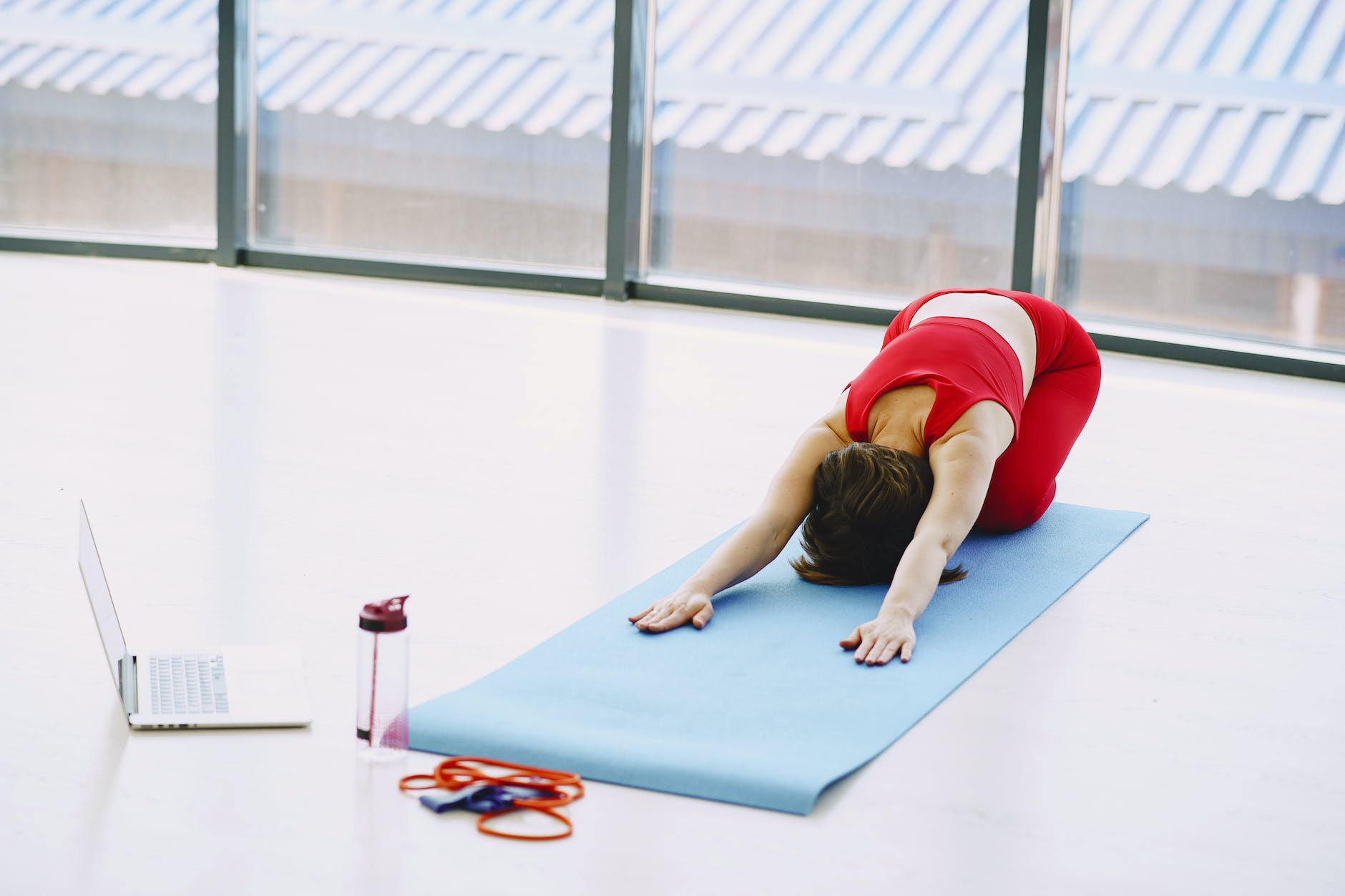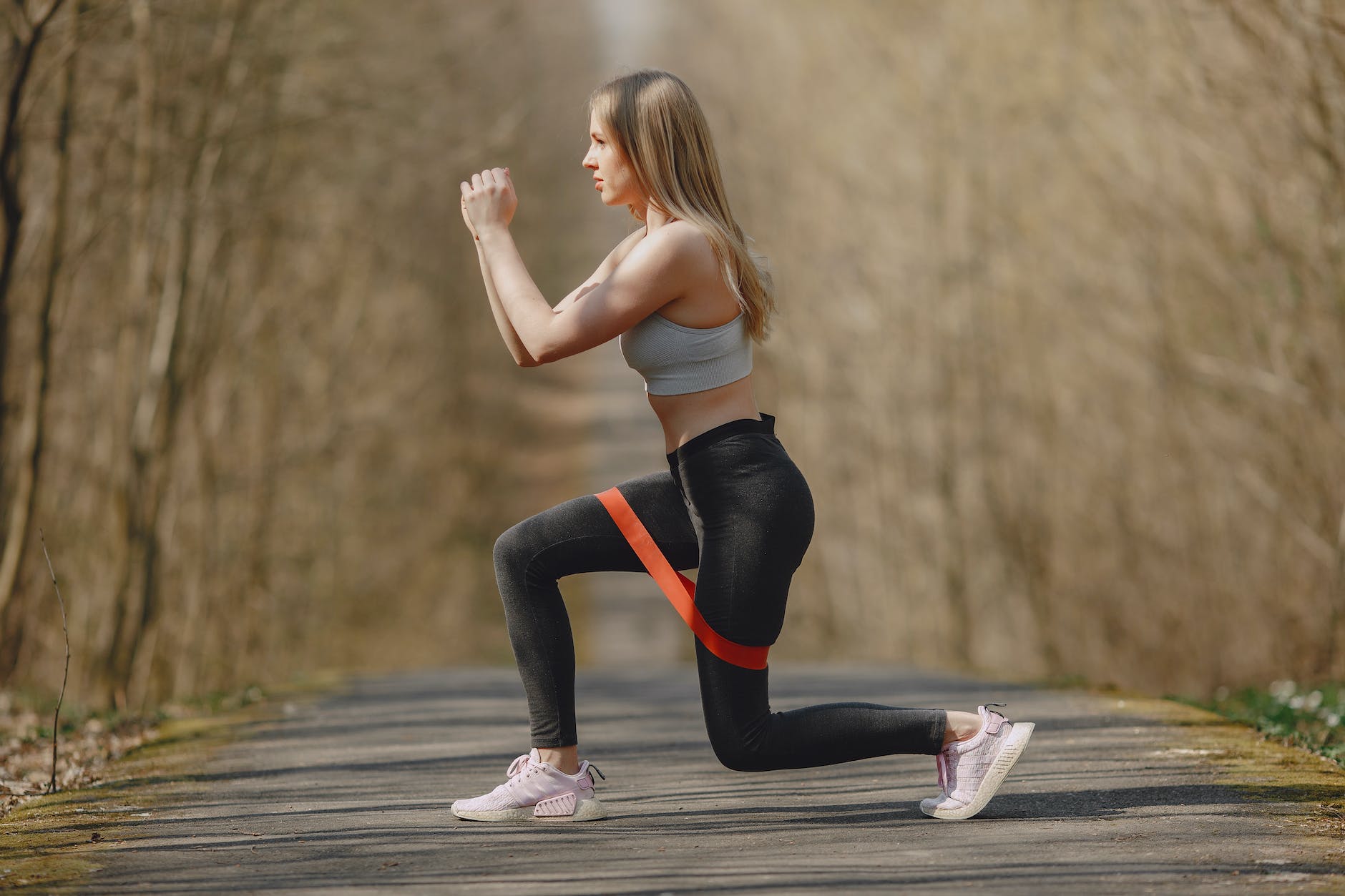If you’re looking to tone your glutes, resistance band exercises are a great way to do it. These versatile bands can be used anywhere, and they’re perfect for working your glutes from all angles. In this post, we’ll explore 8 resistance band glute exercises that you can do at home or at the gym.

1. Banded Squats:
Place the band around your thighs, just above your knees. Stand with your feet hip-width apart and squat down, keeping your knees out over your toes.
2. Glute Bridge:
Lie on your back with the band around your thighs. Bend your knees and place your feet flat on the ground. Lift your hips up towards the ceiling, squeezing your glutes at the top.
3. Clamshell:
Lie on your side with the band around your thighs, just above your knees. Bend your knees and stack them on top of each other. Lift your top knee away from your bottom knee, keeping your feet together.
4. Fire Hydrant:
Start on your hands and knees with the band around your thighs. Lift your knee out to the side, keeping it bent at a 90-degree angle.
5. Standing Kickback:
Stand with the band around your ankles. Lift one leg behind you, squeezing your glutes at the top.
6. Lateral Walk:
Place the band around your ankles. Take a small step to the side, keeping your feet shoulder-width apart. Take another step with the other foot, keeping constant tension on the band.
7. Banded Deadlift:
Step on the band with both feet, holding the handles with your hands. Hinge at the hips and lift the band up towards your hips, squeezing your glutes at the top.
8. Glute Burnout:
Wrap the band around your thighs and sit in a chair position. Pulse your knees outwards, keeping constant tension on the band.

Why Resistance Bands Are Great for Glute Workouts:
Resistance bands are a great tool to use for glute workouts because they create constant tension on the muscles throughout the entire range of motion. This means that your glutes are working harder and you’ll see better results. Additionally, resistance bands are easy to use and can be taken anywhere, making them a convenient option for at-home workouts or when you’re on the go.
Tips for Using Resistance Bands:
When using resistance bands, it’s important to choose the right level of resistance for your fitness level. If the band is too easy, you won’t see results. If the band is too difficult, you risk injury. It’s also important to maintain proper form throughout the exercises to avoid strain on other muscles or joints. Finally, make sure to warm up properly before starting your resistance band workout to prevent injury.
Nutrition Tips for Building Glute Muscle:
In addition to resistance band exercises, nutrition is also important for building glute muscle. Eating enough calories and protein is key to building muscle mass. Additionally, foods high in healthy fats like avocado and nuts can help support muscle growth. Finally, staying hydrated is important for muscle recovery and growth.
How to Incorporate Resistance Band Exercises into Your Workout Routine:
To get the most out of your resistance band glute exercises, it’s important to incorporate them into your regular workout routine. This could mean adding a glute-focused resistance band workout once or twice a week, or incorporating a few resistance band exercises into your existing leg day routine. Experiment with different exercises and routines to find what works best for you and your fitness goals.

Benefits of Strong Glutes:
Having strong glutes is not just about getting a toned and lifted booty. Strong glutes help to support your lower back, stabilize your hips and pelvis, and improve your overall posture. Additionally, strong glutes can help to improve athletic performance in activities like running, jumping, and squatting.
Variations to Make the Exercises More Challenging:
Once you’ve mastered the basic resistance band glute exercises, you can start to add variations to make them more challenging and continue to see progress. For example, you could add pulses or holds to the end of each rep, increase the resistance of the band, or perform the exercises on an unstable surface like a Bosu ball.
How to Track Your Progress:
Tracking your progress is important for staying motivated and seeing results. One way to track your progress is to take photos of your glutes before you start your resistance band workout routine, and then take progress photos every few weeks to see how your muscles are developing. You can also track your strength gains by noting how many reps you can do with a certain resistance band or how long you can hold a certain position.
Incorporating Recovery into Your Routine:
Finally, it’s important to incorporate recovery into your resistance band glute workout routine. This could mean taking a rest day between workouts, stretching after your workout, or using a foam roller to massage sore muscles. Proper recovery is important for preventing injury and ensuring that your muscles are ready for your next workout.

Leave a comment